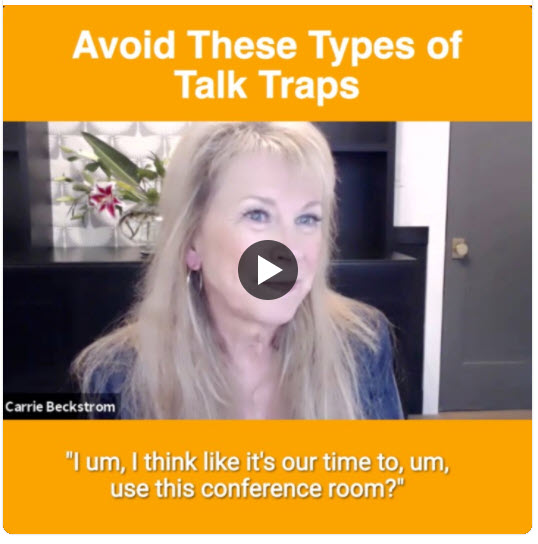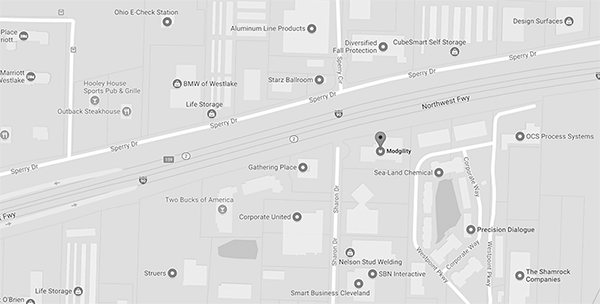Digital marketing, Online marketing, Inbound marketing, or Demand gen marketing (whatever you want to call it or refer to) is getting business owners to the same place—increased sales and improved ROI. While most businesses agree that is the goal, not all see eye-to-eye how to achieve that goal.
We hear you. In comparison, most businesses agree that marketing is essential; not all agree on the tactics or strategies to go from point A to B.
And while most of our people and clients we’ve trained in the marketing space over the years wouldn’t want to do without tactics and strategies, “hesitation” or change is common.
We know the process of getting from point A to point B in your customer’s journey is not linear. And it can look more like a climb to the top of Mount Everest (without oxygen)—moving up and down the mountain to get to the final destination, adjusting to the altitude, and waiting, always waiting for good weather.
A similar process, the customer journey, is unpredictable too—until you understand their unique pitfalls, objections along the way, and their goal. And communicate it to them.
And yes, we understand, as a business owner, you want to increase your market share while avoiding confrontation with your competitors. All while keeping your secret sauce to yourself—pricing, comparisons, the negatives (everyone is searching, but no one wants to address), and so much more.
However, in 2022 the “formula” may flip the conventional marketing funnel upside down or on its side.
But let’s say, right now, we know marketing as we used to know it has evolved.
Having the method, tactics, and strategies to communicate to your customers will become more accessible in 2022 if you start thinking a little differently and develop your action plan.
By building the stepping stones now, you’ll become a trusted voice in your space. But you need to consider these things are changing.
So suppose you are ready to change the status quo that marketing remains the same for the last decade, and as marketers, you become pro-active rather than reactive.
And you become your customer’s voice and not your company’s voice.
What’s your next best step?
Develop an integrated marketing and sales strategy that works today.
In the meantime, keep reading for more information and pointers…
Content
1. Customer Experience from Click to Close
2. Co-create with Senior Decision-makers
3. Go to Market with Differentiator
4. Establish a great place to work
14. Mental Availability 95-5 Rule
19. Gated vs. Nongated content
1. Customer Experience - Stand in Your Prospect's Shoes From Click to Close
Customer experience today is more critical than ever to the success of your business. Think about the time you had a positive experience and the time you had a poor experience as a customer.
One leaves a bad taste in your mouth.
Customer experience is the good or bad taste your customers sense through their buying journey. Do it right, and you'll have a happy customer that becomes a loyal customer. A loyal customer promotes your business through referrals or word-of-mouth.
Today, customers have all the power, not the sellers.
Let's take a look at some numbers, stats today versus the future . . .
- 30% of B2B technology buyers today already make initial purchases through a digital channel- Forrester.
- 80% of B2B sales will be online by 2025, according to the Gartner Future of Sales 2025 Report.
It is time to rethink the buying process and ensure your company is ready for the future. These trends demonstrate that decision-making happens before your potential customer connects with your sales team or company.
So what can you do? . . .
- Take action and make it easy for your buyers to purchase online.
- Stop delivering misleading information about your product or price—it will only lead to frustration and a deal killer.
- Understand your customer's needs
- Figure out how you can align your marketing team with your sales team. The time is long overdue for the two to work together instead of operating in silos.
- Stand in your customer's shoes. Start answering their questions, pain points, etc. Your content needs to answer and solve needs.
- Your prospect needs to feel safe in the sales process. In the beginning, answer the tough questions. In the middle of their journey, you need to explain why you are the obvious choice to do business with them as they compare their alternatives—your competitor. And towards the end, give them the reason that validates why they should buy from you. Give them the concrete results they need—case studies, success stories, etc.
- Be transparent. Your prospect sees you—on your website, social media, videos.
Sellers say they put the buyers first. Do you agree?
Buyers might disagree.
2. Lean into your senior decision-makers (co-create with senior decision-makers)
The most powerful tool you have when creating content is the senior decision-makers at a company.
Here's why...
They know precisely what other senior execs want to hear before approving deals. Senior leaders can help originate content from using the right language to asking the right questions.
Asked the question,
"How can you best approach senior decision-makers into the sales process pipeline and win them over without adding friction."
Eric Keiles, CMO at Square 2 Marketing, says,
"Lean into the fact we want to talk to senior decision-makers, hear what their goals and objectives are, and incorporate those into the process. It will get you the emotional connection that you're looking for."
When you stop and think about it...
Having an open conversation on all levels, from rep to CEO, about what the solution should look like, the biggest obstacle, and sharing the information with the sales and marketing teams, will create more robust messaging and brand awareness.
3. Go-to-Market With a Differentiator
We all toss the go-to-market, launch date, or new release words around.
And let's face it. Depending on your job, they have different meanings, from product marketing and sales to top management executives.
But we all can agree that Go-to-Market (GTM) connects the dots on how your business can and should engage your ideal prospects to buy your product or service and gain a competitive advantage. And while a marketing strategy is ongoing, your GTM is focused on how you will launch your product or service and bring it to market. It starts more as a short-term strategy and product-driven.
Well, actually, it's a process...
Sangram Vajre, Co-founder at Terminus, presented at HubSpot's Annual Inbound conference last year, and he described Go-to-Market as "a transformational process for accelerating your path to market with high-performing revenue teams delivering a connected customer experience."
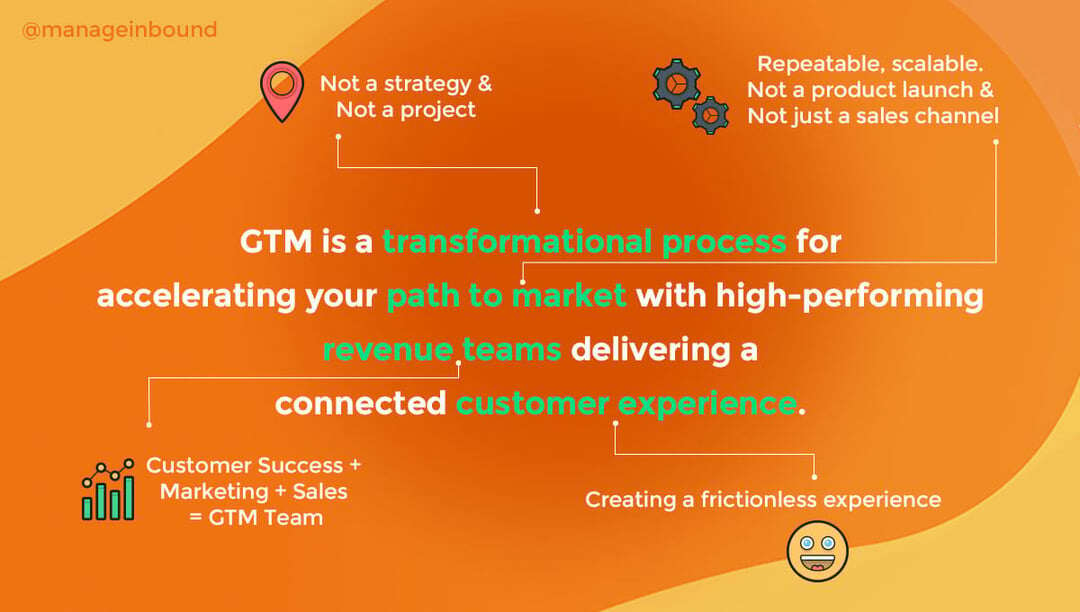
Did you read that last part? There's that customer experience again—creating a frictionless experience.
The goal of the GTM is also to ensure your product reaches the right audience based on buyer personas. While the target market is critical, as well as pricing and a thought-out distribution plan, your value proposition and messaging will start to position your brand.
But what makes your product or service different from all your other competitors in the market? The chances are that another company offers what you are offering.
So how do you differentiate your product or service when it isn't actually different?...
Identify your differentiators and then share those differences with your target market. I know easier said than done.
Here's what it's not...
Price point (Nah) that doesn't make you different. It makes you more or less expensive than what is already in the market.
Product, your core product probably isn't different. Think Coke or Pepsi? It tastes slightly different but is it really a differentiator? Does the unique value of one separate it from the other in the marketplace? Nope.
Slogan or unique design—you might look different, but is there a difference in your product/service versus theirs? Negative.
So what then...
Your unique story. Do you have one?
Tell your story of how you and your company got here.
"If you want to impress others, talk about your successes. If you want to impact others, talk about failures."—John C. Maxwell.
Every successful company has a story. Sharing success and failures shows your authenticity. The realness will resonate, which is the real impact. Bring out how your losses helped you get to where you are today—being successful.
However, remember it's not really about you. It's about whatever you're offering—and how it will benefit your potential buyer. What is it that you do for your customer, others won't? (Your prospects will always look at WIIFM (What's in it for me).
Take your story and the benefit of your products or service and mold it into your differentiator.
Let's take a deeper dive into a go-to-market scenario.
Some will say and believe it's all marketing. And as a content marketer, there is nothing more I'd like to say yes to—it's marketing doing the wonders that marketing does. But that would be a stretch, and "Pinocchio" would agree.
Let's take a look at HubSpot since they are a partner of ours. Go-to-market transformed their business over time. From the ideation stage with a problem that needed a solution, to the transition—full product-market fit, to a fully executed, platform-fit. For the sake of this example, the problem-market fit and the product-market fit are the same markets. The platform-market fit is the new "expanded" market.
Here's what I mean...
HubSpot was interested in servicing marketers and SMB (small and medium-sized business) owners in their humble beginnings. This is an excellent example of seeing a problem, finding the solution, filling the need, and creating a product to serve a specific community—aka "Problem-market" fit.
HubSpot serviced those accounts and business owners and realized the target audience faced a challenge. The SMB and marketers needed automation. They realized marketing and marketing automation for SMB's could earn them the right to become a "Product-market" fit. This was when HubSpot could go-to-market, start scaling their GTM maturity and offer add-on value for their new and existing customers.
It makes sense, right?
But they didn't stop there. After establishing themselves as a worthy product-driven entity, they moved to a "Platform-market" fit—which introduced HubSpot's flywheel to include marketing, sales, and customer service.
Growth isn't always easy and not the straight line we would like to see, but it is possible. Along the way, you have to figure out your ideal customer, who controls the GTM process, aligning departments for strategy, and a million other variables.
As we move forward into 2022, find out what stage of GTM transformation your business is in and align your sales, marketing, and customer success teams.
4. Establish a Great Place to Work—(Employees are Brand Advocates)
Establishing a great workplace is not new, but it certainly has evolved.
We are well into the age of social media. If your company is a great place to work, your employees are the best to tell the world.
Who else would be better to cut through a noisy marketplace in the online world?
At some point, you've heard Google is the best place to work, with 97% of employees agreeing compared to 59% at a typical U.S. - based company.
What are they saying?
97% say I'm given the resources to do my job, unique benefits, friendly work environment, and the list goes on.
They share about life at Google and special events. Do you share posts on Facebook or LinkedIn? Do your employees share on social media? Just head over to a Googlers profile, and you'll see endless posts on brand advocacy.
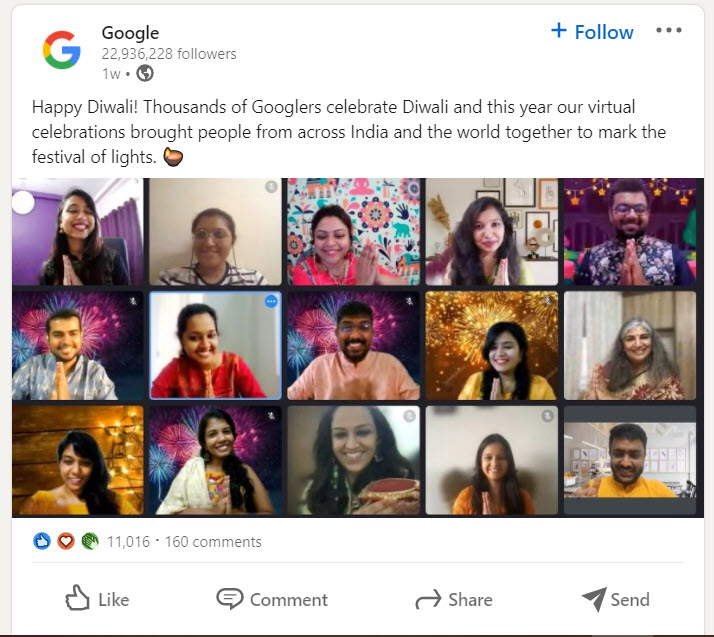
source: LinkedIn
People trust people. They know the difference as to when they are being advertised on social media through paid ads, and they know when someone is authentic.
Take a look at the stats from smarp, leading employee communications and advocacy platform:
- 92% of people trust recommendations from their peers over any other form of advertising.
- An employee shared post reaches 561% further than posts by corporate social media profiles
- Leads generated through employee advocacy are 7 times more likely to convert.
source: Smarp
Face it; employee advocacy humanizes your brand.
Side-bar: If you read down this far, thank you. We've got a lot more coming.
Our goal is to open your eyes to the evolution of marketing and how the market has officially changed. We all agree there are significant benefits of transitioning from push to pull marketing.
Let's continue . . .
5. Story-driven Data Visualization Content
I think I have merged two topics here.
But my thought is storytelling is not new—it's been around for 30,000+ years (think cave paintings), and data-driven content is not new. Companies are still missing opportunities because they still treat their data as top secret and use it exclusively for internal business decisions.
I'm not saying anything is wrong with that...
But what if your business started to share data and offer that value back to your customers through data-driven storytelling. Customers want information that is useful to them. And buyers want transparency.
Let's start with the power of storytelling.
Using the Golden Circle framework, invented by Simon Sinek, organizations can explore their brand identity beyond the products they offer.
The WHY - Why are you doing what you're doing? This will communicate feelings.
The HOW - How will this help your audience? More fuzzy feelings.
The WHAT - What are you offering? A little more analytical brain thinking here.
"People don't buy what you do, they buy WHY you do it"—Simon Sinek
Let's get into some of the essentials you'll need...
Essential elements of storytelling:
- Character - your audience, your readers
- Conflict - how your character will transform through challenge (if your story lacks conflict, it's not really a story, is it?) It's more of a pitch or just a statement.
- Resolution - fulfill the purpose behind the story. And add a call-to-action
We have the elements of a good story, but how do you communicate data without your audience falling asleep.
Here's where your 'secret' data can turn your potential customer into a loyal customer. Here's where you can use fact (data) and narrative to communicate to your audience.
Craft a Compelling Case for Your Audience Using Data and Storytelling (and Visualization)
Data can change the impact your story has on your audience. Your potential customers and existing customers deserve to see hard data that proves why your product or service is the one for them and aligns with their business goals.
And in a way that is appealing and easy to comprehend. When paired with visuals, information is 70% easier to remember than when displayed as text alone. (source: American Management Association)
Steps to create your data visualization...
1. Take a look at your company's data. Does anything jump out that your consumers would love to know. See any trends?
2. Create the narrative to tie to your data. Start to develop your story.
3. What are the key data points you need to highlight?
4. Decide on your format. How will you represent your data—single data sets, part-to-whole, time series (data over a specific timeframe), comparison to a previous benchmark?
5. Create a visual that speaks to your audience and brings your topic to life. Does your visual educate, entertain, is it memorable, and does it inspire action?
Resource:
Why Your Marketing Needs to Be Data-Driven
Stories humanize and bring complex ideas, data, and experiences to life.
6. Focus on Customer Retention, Loyalty
The goal of any business should be to create a base of loyal customers that stay long-term.
Consider this:
The Gartner Group released a report that said,
"80 percent of your future profits will come from just 20 percent of your existing customers."
That means the revenue sources you’ve been trying to find are most likely sitting right under your nose, waiting to be nurtured and cultivated.
Semrush has found that:
“The probability of converting an existing customer is 60%-70%, while the probability of converting a new prospect is only 5%-20%.”
With those stats and more, customer retention strategies are a worthwhile use of resources.
Build relationships with your customers that focus on trust. Use social media to connect and communicate with your customers. It's great when they can share their experience with your company.
Since customer acquisition costs are estimated 5 to 10 times more than retaining your current customers, nurturing your loyal customers is vital.
Resource:
Semrush, 70 Powerful Customer Retention Statistics You Need to Know
7. Live Video and Any Video to Maximize Sales
Live video has become one of the most popular pieces of online content, especially on social media. It's no longer just Facebook lives but Linked In, Twitter, YouTube, and Instagram.
If you've been wondering . . .
Is a live video worth it, or is this just another strategy built on hype?
Consider these statistics:
Growth of Live Video
In 2019, internet users watched 1.1 billion hours of live video. (source: StreamElements)
By 2027, the global video streaming market size is projected to reach $184.3 billion.
Live Streaming Benefits for Brands
82% of people prefer live video from a brand over standard social media posts. (Livestream)
According to LinkedIn, video ads earn 30% more engagement than non-video ads.
Content Preferences
87% of people will watch a live stream if it includes behind-the-scenes content. (Livestream)
You can see that live video is building momentum fast from those numbers.
Live streaming offers brands a variety of ways to drive awareness and sales. And brands that execute targeted campaigns can drive awareness and achieve maximum ROI.
Sales cycles are getting shorter with videos as they are educating the customer. Videos are getting their questions answered faster and before speaking to the sales department.
Think of how your salespeople can use video. Making a sales proposal? Record a video with key highlights.
8. What's Next for Account-based Marketing?
Account-based marketing is not a new concept, but it has gained more attention with evolving technology and the Marketing and Sales teams seeing eye-to-eye. The teams are starting to collaborate to create buying experiences for mutually identified high-value accounts.
ABM consists of targeting and managing the right accounts, and you can't do that if your departments are siloed. ABM engages across multi marketing channels and includes more personalized campaigns. B2B marketers use ABM to personalize campaigns and ensure that decision-makers receive the right message.
The core idea is to create and align sales and marketing processes.
Respondents to the 2020 Gartner Technology Marketing Benchmarks Survey observed
"Increases in key marketing and sales areas after implementing ABM. Marketing saw improved conversion rates throughout the funnel, increased web traffic, and improved advertising and email performance. Sales saw higher win rates, faster sales cycles, and increased deal sizes."
The benefits include keeping marketing and sales aligned, delivering consistent customer experience, and streamlining the sales cycle. By focusing on high-value target accounts, you move towards presenting, closing, and delighting those accounts. (rather than prospect, connect, research, present, close, and delight.)
Resources:
HubSpot, The Ultimate Guide to Account-Based Marketing (ABM)
Gartner, How to Establish an Account-Based Marketing Strategy
9. Gen Z Will Influence Marketing More Than Millennials
Generation Z (born 1997-2012) is the first generation to grow up with technology from the start. They are diverse, open-minded, gender-neutral, and do-gooders. Growing up with social media, they are less likely to be influenced by direct marketing tactics as they have built up immunity by constant exposure to digital.
And Gen Zers represent a buying power of $44 billion and influence an additional $600 billion of family spending.
Tips for Marketing to Generation Z
1. They’re digital natives. And they want a unified experience across in-store, digital, and mobile.
2. Their attention span is short—get to the point fast and in their language.
3. They value two-way conversations. And like authentic brands.
4. Gen Zers don’t want a faceless company. You must humanize your brand.
5. Video content plays a huge part in their lives.
If you find your company marketing to this group, you need to tailor your content to tech-savvy consumers.
Resource:
MNI Targeted Media, Marketing to Generation Z (It's time to forget about millennials)
10. User-centered SEO is the future.
Keyword-driven SEO is vanishing—the data is no longer accessible.
Every year keyword metric data is getting harder to track. We first started seeing "Not Provided" for organic traffic—even as far back as 2011 when Google introduced Secure Search. Tools like Google Analytics no longer displayed keywords your potential visitors googled to land on your site. Instead, the keywords were lumped together in a new category named "Not Provided."
Volume ranges were removed from Google Keyword Planner, and Google Ads removed queries and keyword terms with "not significant" data.
So if you do not see the data as we progress more and more to protect users' private information, you should probably stop paying attention so much to keywords. It's time to start thinking differently.
It's time to look at a more strategic, wider lens for SEO in the future. Creating high-quality content and making sure your site is technically sound is still a thing. And yes—link building. But if you do the first two things right, links should follow.
2022 is a time to focus on user-centered SEO.
Let's make a few assumptions first:
- You know your personas. (and you can have 3-5 personas)
- You can easily do a quick search for your ideal keyword.
- You can see the search engines' results as the most suitable for your audience, matching their search intent.
Here's the caveat . . .
When you're creating content, focus on topics, not keywords. Be the most comprehensive page that satisfies the searcher's intent based on topic, not keywords.
So what do we need to focus on? . . .
1. The user's needs and pain points are front and center.
2. Content needs to answer and solve needs and pains with expert, trusted content.
3. The user must have a fast and intuitive experience to get them where they want to be.
How will we find some answers to the above three needs to focus?
Start by investigating what the user cares about. What's driving them to solve this? For example, you can use tools like Google Trends—see behavior over 2-3 years.
Use Answer the Public- you'll see what concerns your ideal persona has around your specific type of product. What questions are they asking?
Look at Goole ADs and the wording.
Take a screenshot of the SERPs. What are the questions being asked? You'll be able to pull data and start breaking it into 'search need states'—a method to map and understand your potential customers' needs, behaviors, and intents.
In doing this, you'll define the user problem and develop a solution to the problem.
11. Email Marketing is Still Here and Stronger Than Ever—Email Marketing Trends to Watch for in 2022
So yeah, while we've also heard the same saying for years, "Email marketing is dead!"
It is not dead—it is continually changing! It's still a way you can convert visitors into loyal customers. While it is an older marketing channel than some, it is still one of the best "tools" you have as a marketer.
We understand the email landscape is evolving, which means your work as an email marketer is not the same as a few short months ago.
So what's been changing?
If you're an email marketer, and you haven't had the chance to attend one of Jay Schwedelson's webinars, you're in for a treat. I've been on quite a few, and he always delivers the goods.
Let me get this little piece out of the way—there will be impacts from data privacy. For example, Apple's mail privacy protection features can present a problem moving forward, new legislation, compliance with a different set of rules, and more in 2022.
While changes in the data we collect can make it more challenging, the email channel itself is set to thrive still. We need to adjust to change and become more focused on segmentation and personalization.
Enough said...
Let's give you some actionable tips to get you at least through the 1st half of 2022.
Master your email marketing with these tips to get your emails opened...
- Use bookend emojis - they are working
- Use lists
- Words matter use: the words 2022, outlook, update
- Your 'from address' matters: make it user friendly—establishes relevance, you can use more than one friendly from
- Start sending late morning, middle of the day (always test, email marketing is constantly changing)
- Have a sense of urgency, for example, "Webinar registration ends today."
- Use exclusivity (For CEOs, For the Content Manager, For the Design Guru)
- Test all cap, one word for your email
Master your email marketing with these tips to get your emails read and make a conversion...
- Focus on the goods inside: interactivity, images, and stories
- Create well targeted beneficial information
- Don't be focused on your product/service
- Must include a great CTA
- Test animated gifs
- Test your CTA
12. Bring in the Audio Component aka 'Podcast'
It's never too late to have your voice be heard.
Podcasts are popular because it's an easy to consume format that can fill a void and be used when multitasking. Not everyone has the time to read long-form content, as in a blog post or even watch videos. Podcasts can place your brand in front of an audience at their leisure and with less friction. It's a listen on-the-go type format.
It will become an innate part of our life—a much more prominent role in the future.
Convince & Convert shares . . .
"In 2021, 28% or 80 million Americans are weekly podcast listeners. There are now 10 million more weekly podcast listeners than the 69 million Netflix account owners in the U.S. This could indicate the start of a shift from video to audio media."
Getting started . . .
- Do your research. There are indicators for an opportunity.
- Create the number 1 solution for your listener and begin there. Create categories of subjects that would be of interest to your community.
- See what gains traction. You must look at the bigger picture and make assessments of the marketplace.
- Audio on demand is only going to grow.
- Approach it creatively. You must stand out from all the other noise.
- You can be bold in the beginning—you have nothing to lose.
Podcasting is to help influence a community that you will build over time. It also establishes a more personal relationship with your listeners. (especially if you share stories, including your challenging times.)
Single Grain says . . .
"In 2022, podcast hosts and content creators must step up to produce shows that keep people hooked. There's even a new term for it: Listener Experience (LX)."
A power tilt is leaning towards your consumer. You have to cater to and serve your audience.
Resources:
Convince & Convert, Podcast Statistics for 2021 - Charts and Data
Exploding topics, 9 Podcast Trends to Follow (2021-2023)
13. What is Content Marketing Today
Have a few things changed from when this post was written to when you're reading it now?
Sure. What has not changed is the fact that quality matters. And as an industry, we have to develop and utilize our in-house subject matter experts.
Let's look at long-form content written for "search intent" in prior years. As a whole, we looked at blogging to improve search engine optimization (SEO), increase audience engagement, and build relationships with leads and customers.
2022 the intent is the latter part—your customer. Writing for your customer and becoming the most trusted voice in your space.
Did you know that one-third of all web pages in existence are blogs? And over 409 million people view more than 20 billion pages each month. [Semrush]
That is a lot of noise to cut through.
We're not saying there's not a time to write for SEO—always consider SEO. But, make it educational, informational, storytelling at its best and answer or solve a problem for your ideal prospect.
There is a more pressing indication that it must be more customer-centric. Your customers—those landing on your website for information, want the best information at their fingertips.
And this means—pricing, comparisons to other products or services in your niche, addressing those problems that no competitor wants to discuss, and addressing,
"What is my customer asking?"
Because it's time, you answer them—on your website. It will build trust, phase out those prospects that are not a good fit, and make the buying process smoother.
What will that give you? . . .
Increased organic traffic (we still love SEO), better leads, and revenue growth.
Buyers and customers have shifted the way they make purchasing decisions. Your business needs to adapt to this shift and prepare more for this type of 'digital customer.'
As one of our clients was in the HVAC industry, we constantly researched what their competitors might be up to. This website is an excellent example of how they use their site to answer customers or potential customers questions . . .
Notice it's about the cost of an air conditioner, furnace replacement cost, etc.
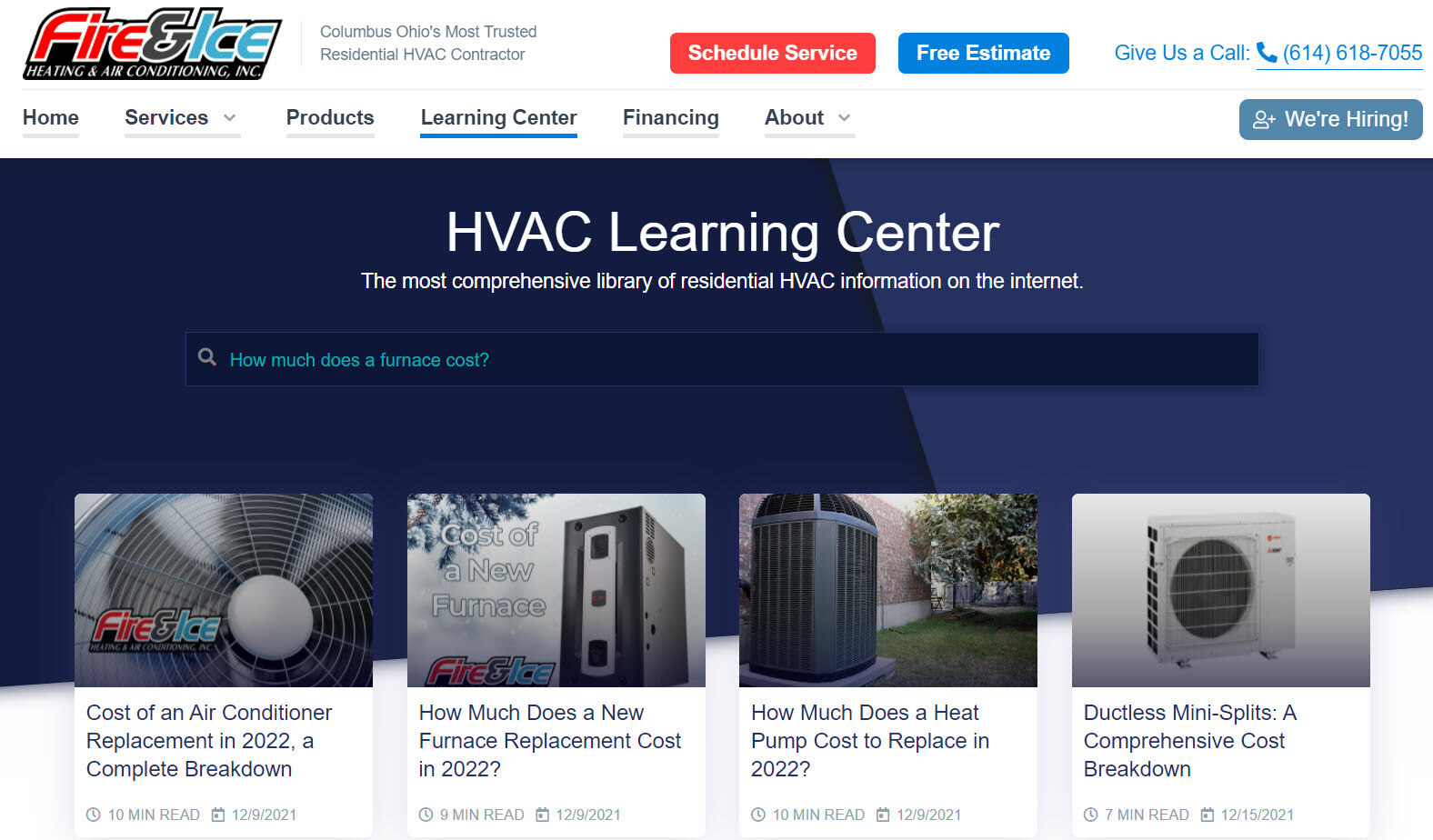
If you click on Cost of an Air Conditioner Replacement in 2022, it gives you a complete detailed guide on the cost—with video, typical expenses and accessories, AC system efficiency, and more. The point is it's thoroughly educational and answers the customer's questions.
And without giving away all their data, that page ranks #1 for ac replacement cost (at the time of this writing).

14. Mental Availability or Situational Awareness
In an Inbound session with Jon Lombardo, Head of Research, the B2B Institute, in October 2021, mental availability was a hot topic.
"Mental availability is about increasing the probability your brand comes to mind in different buying situations."—Professor Jenni Romaniuk, Ehrenberg-Bass Institute.
Mental availability is the most critical objective in B2B.
Piggybacking on that quote came—"Mind share drives market share." We were also enlightened with the 95-5 rule.
The session was an eye-opener and made all attendees think about the 95-5 Rule—5% of your potential customers are ‘in-market’ today, while the other 95% are not in the market to make a purchasing decision. If your customers don't know you when they enter the market, there's no way they'll consider you.
So,
You need to use marketing efforts to become the authority in your market space and stay top of mind when the 95% shift to the 5%.
Salesforce focussed on future customers with their marketing and taking care of current customers with their educational content.
Salesforce launched a 'trailblazer' campaign that featured the memorable "Astro," a raccoon which the community was developing an affinity towards.
Astro was used in multiple campaigns targeting different industries that could use Salesforce products.
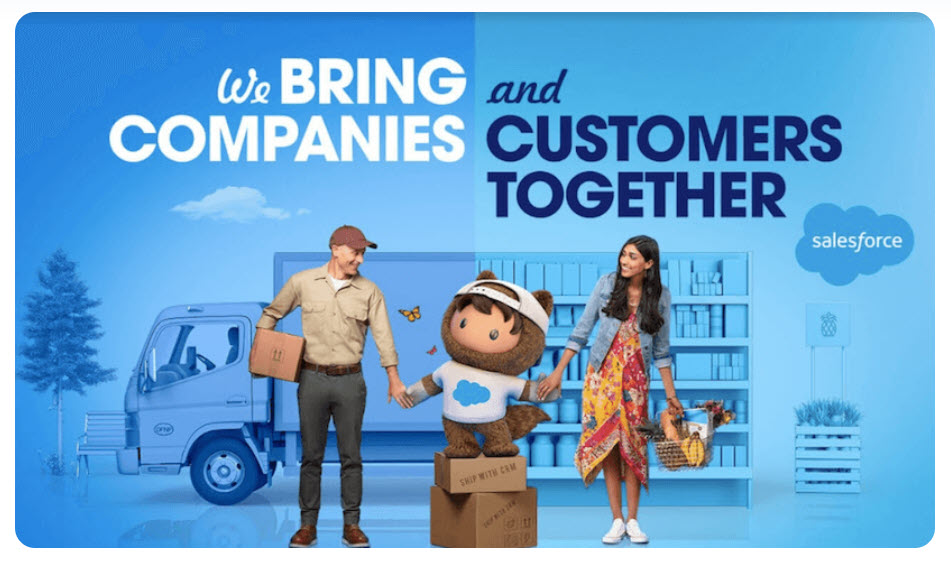
Image credit: Salesforce, News & Insights
Building the mental availability and associating your product to solve your customers' needs sets your brand when the 'out-of-market' is ready, and your brand is the one they are familiar with.
Here's the AHA moment . . . Buyers put themselves in-market. Not marketers.
Mental availability is about being remembered. (Do you think you'd remember seeing Astro in an ad?)
Here's what you can do to get started with mental availability:
- Prime future buyers with brand ads to grow.
- Focus on awareness, not perception, to grow.
- Steal mindshare from big brands to grow.
- Reach future customers to grow
There are some flaws in the "focus on the funnel" approach. Lead generation focuses on capturing people who are 'in-market,' which only 5% of buyers are in at any given time.
So it looks based on this analogy that the funnel is somewhat on its side. In-market vs out-market instead of ToFU and BoFu—we are going to reach buyers who are not even in the funnel.
There needs to be a greater focus on building "mind share to drive market share" with 'out market' buyers, of which 95% of potential buyers are. This reinforces our next topic—the importance of Demand Generation activities to build great mind share.
15. Demand Generation vs. Lead Generation
In its simplest terms, Demand Generation is the process of creating awareness and demand for your products or services. It generates a buzz and drives traffic to complete an action. It increases brand awareness, educates, and builds trust—sparks an interest.
Lead gen, although similar, is different in that it captures contact information, nurtures qualified leads, and converts leads to customers.
They have distinct marketing approaches and tactics. Both are efforts within your inbound marketing strategy.
Here's an excellent example of Demand Gen in action . . .
Carrie Beckstrom, CEO, PowerSpeaking, Inc., created a video showcasing the "talk traps" women, in particular, tend to use —filler words, qualifiers, and apologetic language so they don’t offend anyone.
The views and comments suggest Carrie hit the mark with her audience.
The point here is if someone is not in the 5% buying market—the video will put PowerSpeaking® into their memory bank when the time is right.
And yes, it takes more than just one video, but when you're persistent and share helpful information with your persona, it will pay off in the long run.
Next up is Attribution.
How do you track the 'dark social' or what we should track moving forward?
16. Marketing Attribution
Marketing attribution is determining which marketing tactics are contributing to sales or conversions. Easier said than done!
And in 2022, it will get even more complex.
Your approach to marketing attribution needs to change with ever-increasing data privacy and ongoing GDPR privacy legislation.
For years, the trend in marketing attribution was identifying and tracking customers and potential customers through cookies, mobile device identifiers, and location data—all hoping to tie behavior across multiple channels.
Many are determined to experiment with influencer marketing (say on Linked In), but it's a channel that doesn't fit neatly into attribution models.
So how do you determine the ROI on your marketing dollars?
The goal of every business and marketer is to know where to spend your time and money and where to stop on Marketing.
Attribution models are a way to help understand where conversions are happening in your marketing channels. And help track the impact of every touchpoint in your customers’ journey.
There are no one-size solutions that fit every business model.
A start would be aligning the marketing measurement with your business objectives and KPIs, documenting conversion points, and measuring your campaigns.
It's important that your campaigns are aligned with your company goals, not just sales.
17. Customer Voice Content
Your buyers want to hear your customers' voice. But, your content's all in your company's voice.
It is time to add more of your customer's voice into your inbound marketing. Your buyers want to hear and have their questions answered by your customers—those actually experiencing the benefit. It helps alleviate their fears and knocks down any objections.
Ask your customers to share their knowledge, experience, and advice. But level it up and do more than a testimony. Have them use a video or audio of how their business improved using your product or service.
At a recent HubSpot Inbound event, CEO Jeff Ernst at SlapFive shared some great examples of where you can insert customer's voice.
Here's an example where Buyer Persona Institute, which researches buyer personas, created a page on their website with peer-to-peer advice. They understood there were some key thought leadership points that they wanted to share. So, they embedded customer voice right on the website.
Buyer Persona Institute asked marketers who successfully built and implemented buyer personas to share their advice on five of the top issues that can stall or sink a successful buyer persona initiative.
The short clips helped address any obstacles when getting started.
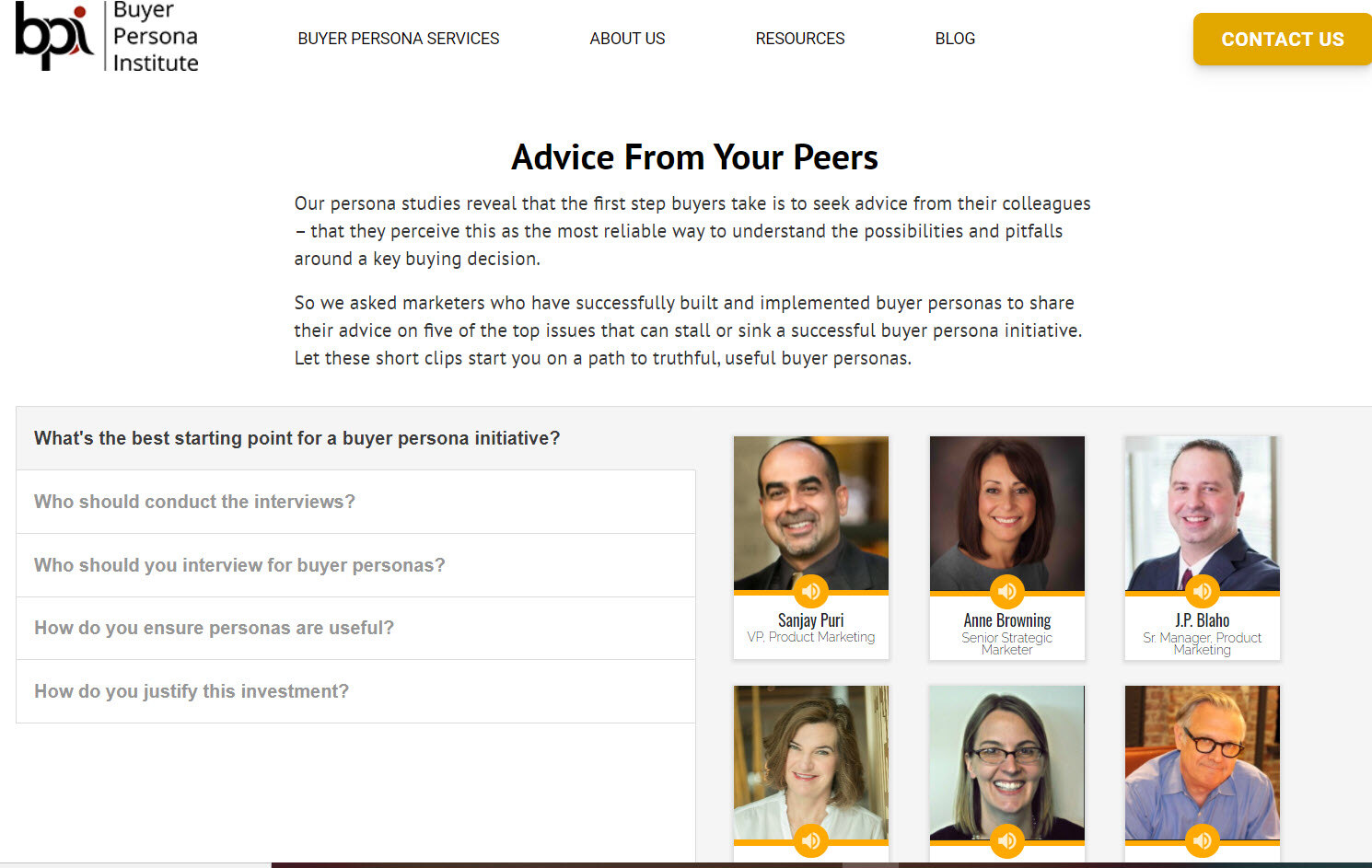
source: Buyer Persona Institute, Advice From Your Peers
Another great example, Acumatica, featured customer voice with audio and video right in their blog posts.
Visitors on the blog post can skip some of the rich text and get answers to some of their questions from a customer experiencing the benefit of using the product.

Source: Acumatica, Acumatica Manufacturing Edition a Foundation to Grow Our Business, Says Specified Technologies Inc.
There are numerous ways to infuse customer voice content on your website, email, social media, and more.
A few more examples are campaign landing pages, competitive replacement (Why a customer chose one product over another), a buyer's guide, and more.
18. Understanding the Difference Between Marketing & Sales
As a content writer on a Marketing team and working with various clients in differing industries, I often see the blurred line (and feel their frustration) between Sales and Marketing.
And what I mean by that is, we as a team are working toward the same goal and doing some of the same activities.
Yes—marketing wants to inform and educate our visitors to build the trust factor AND convert them.
Yes—sales want to convert visitors right away, but do you really think they will convert without some information, aka education upfront.
No—we work together.
But there is one thing that needs to change within both departments. Stop being so siloed and join forces. It's about customer growth.
Let's face it...
Marketing's a marathon but marketing grows sales INDIRECTLY and marketers' goals are to drive momentum to achieve mid to long-term growth.
But wait, there's more...
Branding is trying to educate someone to build affinity and brand. (And it's not the 5% that are actually looking for your product—it's the 95% that are not looking.)
Marketing is trying to promote that brand and attract them to an offer.
When branding and marketing are done right, sales are ready to convert someone.
However, what moves the needle is when sales can come back and say the prospects read an article, saw a post, or a video on Linked In, and that started the journey. And it's not just one post or one article; it's built over time. The trick is balancing the right activity based on today's modern buyer's journey.
The conversation is just beginning to take flight.
If you want to read an interesting thread with some great minds in Marketing and Sales and pick up some viewpoints that might just change your way of thinking onward—read some of the comments on Chris Walker's Linked In.
Chris Walker, CEO of Refine Labs, outlines his sales/marketing thinking with a crystal clear differentiation/definition of the difference between sales and marketing.
Much of it is perception driven by mindset, Chris believes.
Here are a few comments that jumped out to me:
First from Chris...
"When people have intent, I’m trying to convert them too (Sales).
But I recognize that a far majority of your available market does NOT have intent (>99%). And for that segment, the best option is to execute MARKETING."
Commenters...
"The BEST salespeople know how to function in a marketing role by building relationships through likeness, education, and value."
"It must be a relationship and understanding between the disciplines —not us vs them or “hand-off” mentality."
"Always should be challenging the status quo or "best practices" and assumptions on what works and what doesn't."
19. Gating versus Ungated Content: Which Way are You Headed in 2022?
I love a good debate, and this has been an age-old debate among marketers—to gate or not to gate.
I will say...there is a time and place for both. And there is no cut-and-paste answer. But if you aren't giving me a choice and I had to decide right here, right now, I'd have to go "team ungate." (And I was a 'gater' for most of last year)😅
But hang on, we're ready to make a discovery together.
Let's look at both advantages that were still being tossed around at the end of 2021. Both are pretty valid.
Pros to Gate Your Content:
- Traffic alone is a vanity metric. If you gate your content, it gives purpose to your traffic. You generate a contact that could potentially convert to a customer. You have a new lead!
- You now have the opportunity to nurture the lead through their buyer's journey. (right message at the right time)
- Using the micro-transaction, you can gather additional information about your lead to help generate better content.
- Perceived value - there is a perceived value that content behind a gated form is better
- Gated content gives the visitor the next best step.
- Gated content provides progressive profiling for a better user experience. You adapt the forms as the visitor goes through their buying stages.
- Gathering introductory names and emails allows you to send hyper-targeted emails.
- Gated content itself serves as a segmentation tool.
Pros to Ungate Your Content:
- Less work—no need to create forms!
- You are no longer throwing up a barrier for entry. This gets rid of the friction for your visitor and no more form fatigue.
- Gated content needs to be located on your website behind a form, As a PDF if it's ungated; it broadens your audience as you can use the content freely on social media for engagement and use sections of the PDF in various formats.
- Flexibility for distribution. (infographics, videos, images, etc.)
- You'll write differently. Your writing will not be to capture the email. Your writing will evolve to capture their heart. (emotion)
- Ungating, a piece of content will give you some search engine optimization (SEO) benefits. Search engines are able to crawl your ungated content, which will help with your SEO and organic rankings.
- Better user experience in the buyer's journey. It gives them a chance to educate themselves on their pain points. (as they are ready)
- You can still remarket to your audience that viewed your content, so you're not losing on the "Follow-up."
- You can still measure the CTA through the phases of a funnel. (without gating)
Before you decide on Teamgate or Teamungate, you have to decide that you are ready to stop prioritizing MQLs as a primary marketing metric. And that is a challenge because that is what we've done for a decade.
But like anything—test it, challenge it, get the results you're after!
Closing Thoughts . . .
I hope these tips or discoveries have inspired you to rethink content trends in 2022. It takes a lot to make a great personalized experience your potential customers and customers enjoy.
At Modgility, we offer inbound growth to make your business thrive—clarify your marketing and sales strategy to generate and convert more qualified leads.
Now I'd like to hear from you:
Which marketing trend inspires you the most?
Do you have a suggestion that I didn't cover?
Please let me know by leaving a comment below . . .




